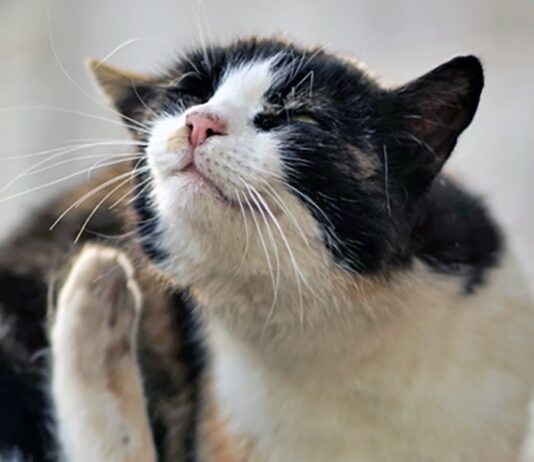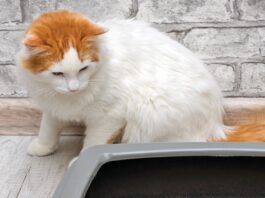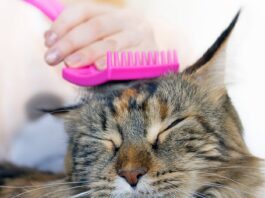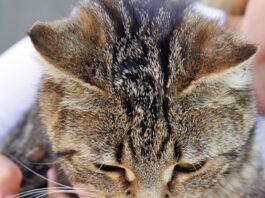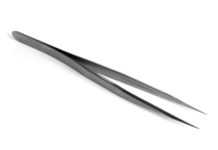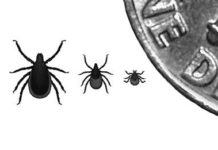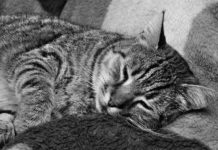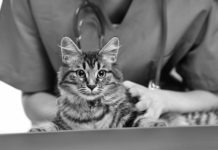Three Simple Tips To Tick Removal
Ticks can be found anywhere on a cats body but usually attach near the head, neck, ears and feet. If you discover one, remove it as soon after attachment as possible, says Meryl Littman, VMD, ACVIM, at the University of Pennsylvania. Do not cover the tick with Vaseline, gasoline or anything else beforehand. And do not remove it with your bare hands - a crushed ticks bacteria could get into your cuticles and infect you.
They’re Always Looking For A Welcome Host
Lyme disease bacteria live in deer ticks that feed on deer, rodents and other hosts. A tick in search of a meal may lurk on a blade of grass or bush. When a promising animal passes by, it grabs hold and hitches a ride. Once aboard, it crawls along, seeking an unobtrusive patch of skin, then latches on with its front legs, cuts open the skin with its mouthparts and inserts a barbed feeding tube that makes removal challenging.
Indoor Cats Arent Safe From Lyme Disease
Ticks used to be most active in spring through autumn, but rising temperatures attributed to global warming have shortened their long winter naps and in some areas eliminated them entirely. The result: Tick bites have become a year-round risk in many parts of the U.S.
Finding Forever Homes at End of Their Journey
The Louisiana SPCA has found a novel solution to overpopulation at its New Orleans shelter. It sends dogs and cats to partner shelters miles away, where they can often be more quickly adopted. Its service is part of a small but growing trend in U.S. shelters and rescue organizations to save animals lives and find them forever homes.
When Seniors Lose Bladder Control
If your cat is more than 10 years of age, and you see him arising from a nap in a puddle of urine or with a moist rear, he could have age-related urinary incontinence. The problem, frequently occurring in senior and geriatric cats, has several causes.It often results from urinary bladder or sphincter problems, says Leni K. Kaplan, DVM, MS, a lecturer in the Community Practice Service at Cornell University College of Veterinary Medicine. However, incontinence can also be related to anything obstructing urine outflow, such as a tumor or stone. The bladder may then over-distend, and the cat may leak if he remains in one place for a while.
The Common Cause of Ear Infections
One common reason for veterinary visits among cats is otitis externa, or inflammation of the external ear canal. Most people believe that that the term otitis externa means an ear infection, but that isnt true. Something has to breech the normal defense mechanism of the ear to trigger the infection, says veterinary dermatologist William H. Miller, Jr., VMD, Medical Director of the Cornell University Hospital for Animals. Once the surface of the ear canal is damaged, bacteria or yeast inside and around the canal can cause an infection. The underlying causes can include tumors, allergies, ticks or fleas, and excessive grooming and ear wax. But by far the most frequent cause in cats, especially kittens, is ear mites.
The Truth About Litter Box Aversion
Thinking outside the box has become a clich, but its still a praiseworthy trait. When your cat eliminates outside the litter box, however, its a problem. House soiling - urination or defecation any place other than in a litter box - is a major reason that owners surrender their cats to shelters. Cats dont avoid the box because theyre being spiteful. Theyre raising an alarm. Cats who eliminate outside the litter box are communicating to their owners that something is wrong, either with a specific aspect of their box, their health or relationship with another member of the household - feline or human, says Pamela Perry, DVM, Ph.D., a lecturer in animal behavior at Cornell University College of Veterinary Medicine. It is the most commonly reported feline behavior complaint to veterinary behaviorists.
Marking is a Different Story
Some cats mark vertical objects with a small spray of urine, often standing with their tail upright and twitching at the same time. Its estimated that nearly a third of them have no litter box problems. Theyre simply using communication skills that nature gave them, the ASPCA says.They mark their territory to indicate stressful changes in the environment, the presence of cats outdoors, conflict with another cat in the home or, if theyre intact, their availability for mating. Spaying and neutering significantly reduce marking. Whatever its basis, marking can help keep unwanted individuals away, the ASPCA says, adding, It creates an atmosphere of familiarity that makes them feel more secure.
Ask Elizabeth: December 2014
Q. I have two cats, a 15-year-old, 6-pound domestic calico with mid-length hair and a 7-year-old, 8-pound part-Himalayan, also with mid-length hair. Both have developed matted hair on both sides of their hindquarters. I was able to shave the calicos off and the hair grew back OK. The big cat wont let me shave him. What causes these mats?
Theyre Giving Kittens a Chance at Life
Of all the animals in shelters, young kittens are usually the most at risk. Theyre fragile, prone to infectious illnesses and have special care needs. While some are placed in foster homes to be hand-raised until they are old enough for adoption, many shelters euthanize them as soon as they are brought in because they dont have the infrastructure or staff to care for them.
Ask Elizabeth: November 2014
Q. Our year-old male cat, found at a county animal shelter seven months ago, has been diagnosed with eosinophilic granuloma complex (EGC). His symptoms are incessant scratching, puffy gums, blistering mouth, swollen front paw, lameness, limping. Our veterinarian has prescribed steroids for him, and these have been somewhat helpful, but can you explain this disease so that we can better understand what is going on? …
Whats Your Cats Age in Human Years?
If there were an AARP for pets, your cat would get his membership card when he turns 8. Thats about 50 years old in human years, according to Feline Life Stage Guidelines from the American Association of Feline Practitioners and American Animal Hospital Association.

